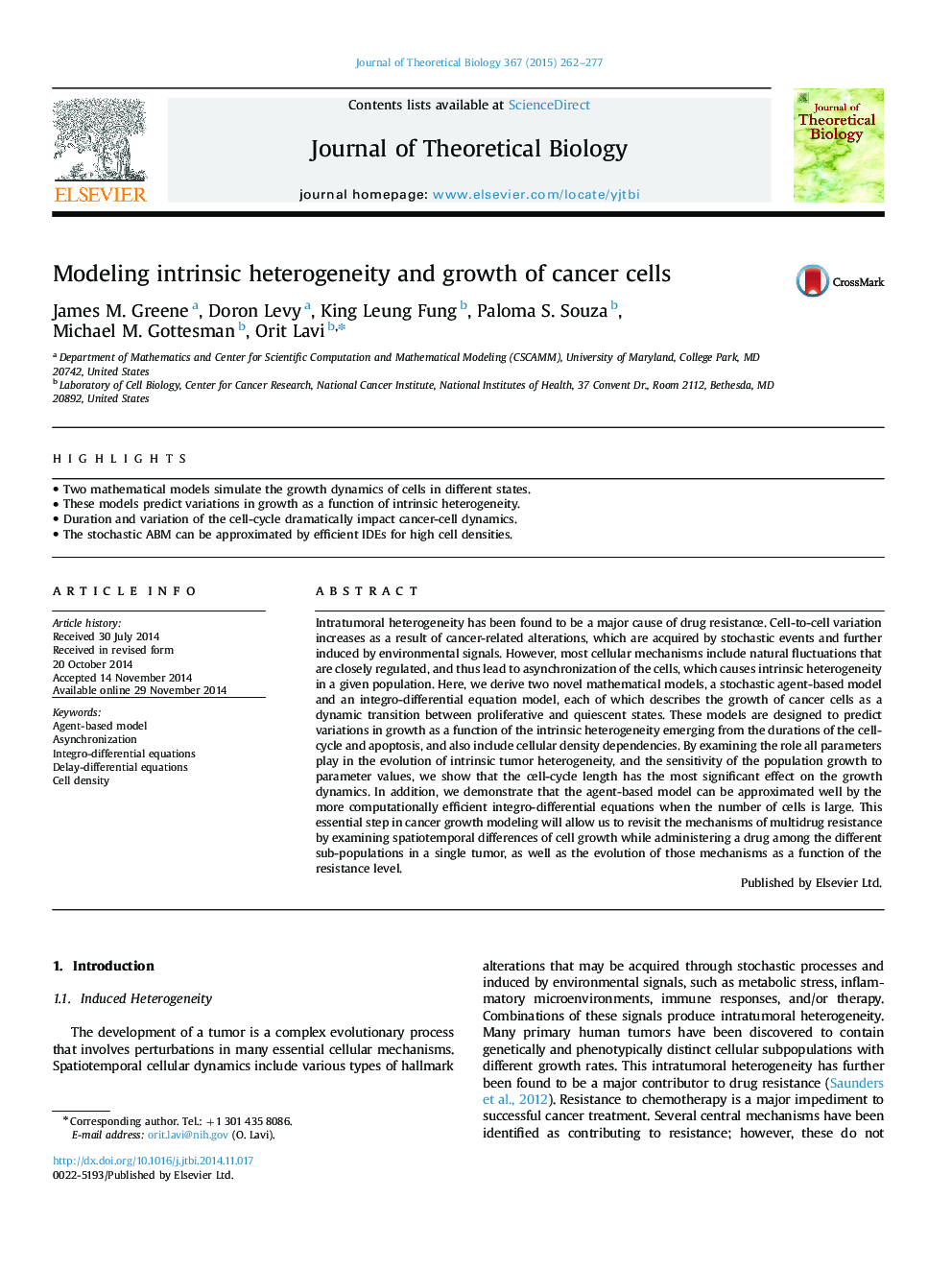| Article ID | Journal | Published Year | Pages | File Type |
|---|---|---|---|---|
| 6370171 | Journal of Theoretical Biology | 2015 | 16 Pages |
Abstract
Intratumoral heterogeneity has been found to be a major cause of drug resistance. Cell-to-cell variation increases as a result of cancer-related alterations, which are acquired by stochastic events and further induced by environmental signals. However, most cellular mechanisms include natural fluctuations that are closely regulated, and thus lead to asynchronization of the cells, which causes intrinsic heterogeneity in a given population. Here, we derive two novel mathematical models, a stochastic agent-based model and an integro-differential equation model, each of which describes the growth of cancer cells as a dynamic transition between proliferative and quiescent states. These models are designed to predict variations in growth as a function of the intrinsic heterogeneity emerging from the durations of the cell-cycle and apoptosis, and also include cellular density dependencies. By examining the role all parameters play in the evolution of intrinsic tumor heterogeneity, and the sensitivity of the population growth to parameter values, we show that the cell-cycle length has the most significant effect on the growth dynamics. In addition, we demonstrate that the agent-based model can be approximated well by the more computationally efficient integro-differential equations when the number of cells is large. This essential step in cancer growth modeling will allow us to revisit the mechanisms of multidrug resistance by examining spatiotemporal differences of cell growth while administering a drug among the different sub-populations in a single tumor, as well as the evolution of those mechanisms as a function of the resistance level.
Related Topics
Life Sciences
Agricultural and Biological Sciences
Agricultural and Biological Sciences (General)
Authors
James M. Greene, Doron Levy, King Leung Fung, Paloma S. Souza, Michael M. Gottesman, Orit Lavi,
